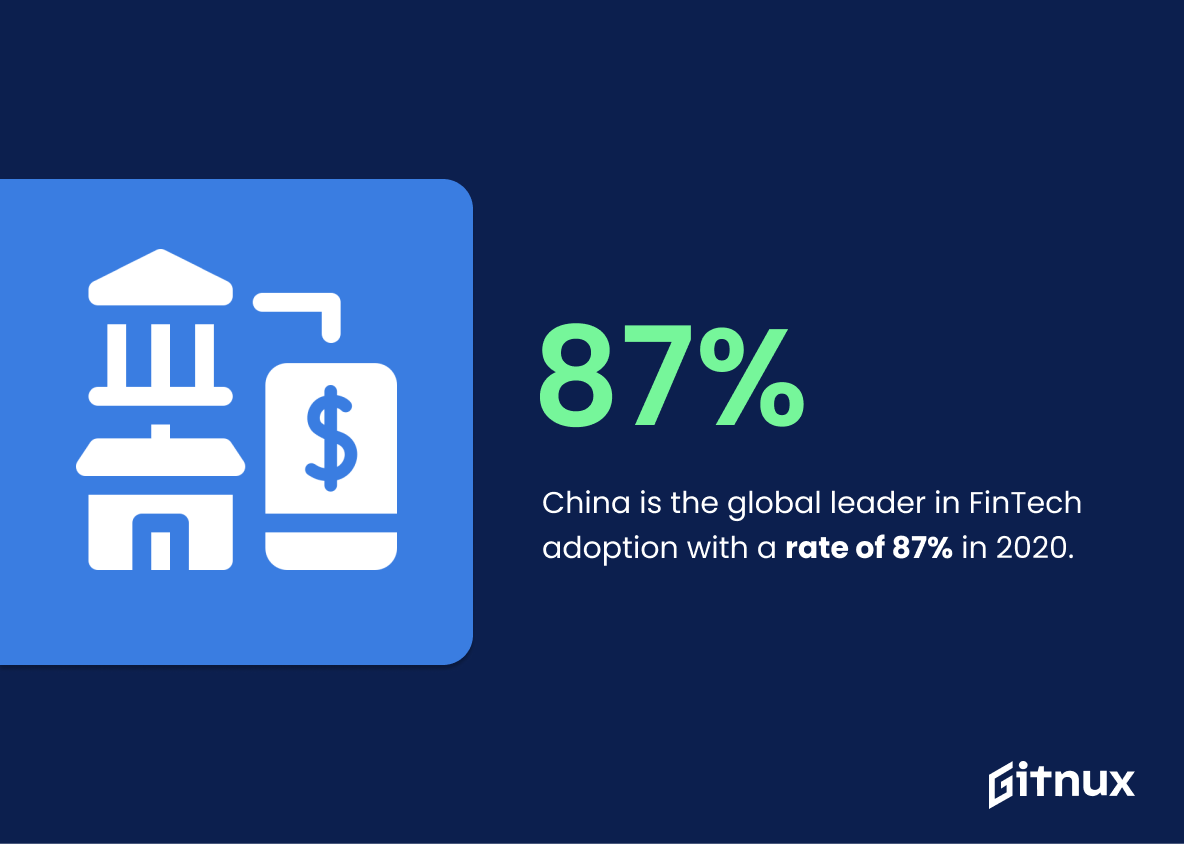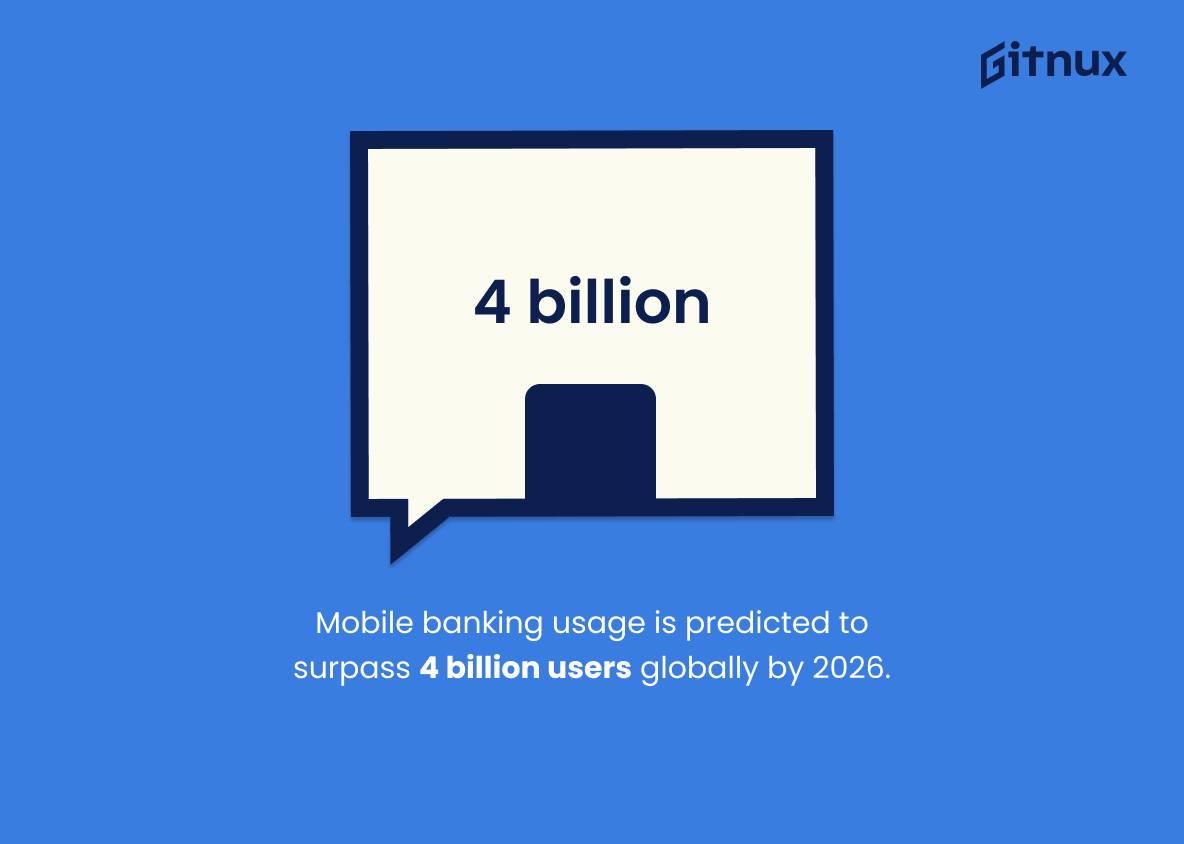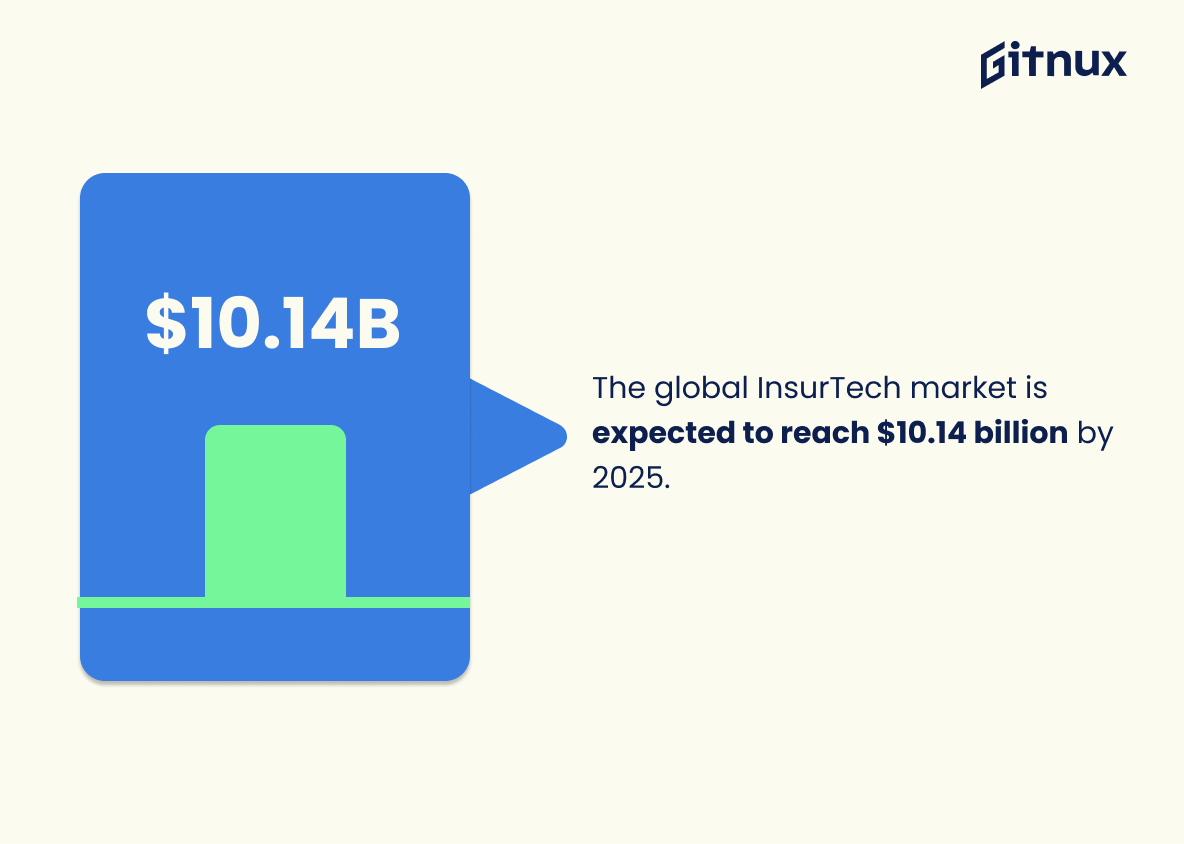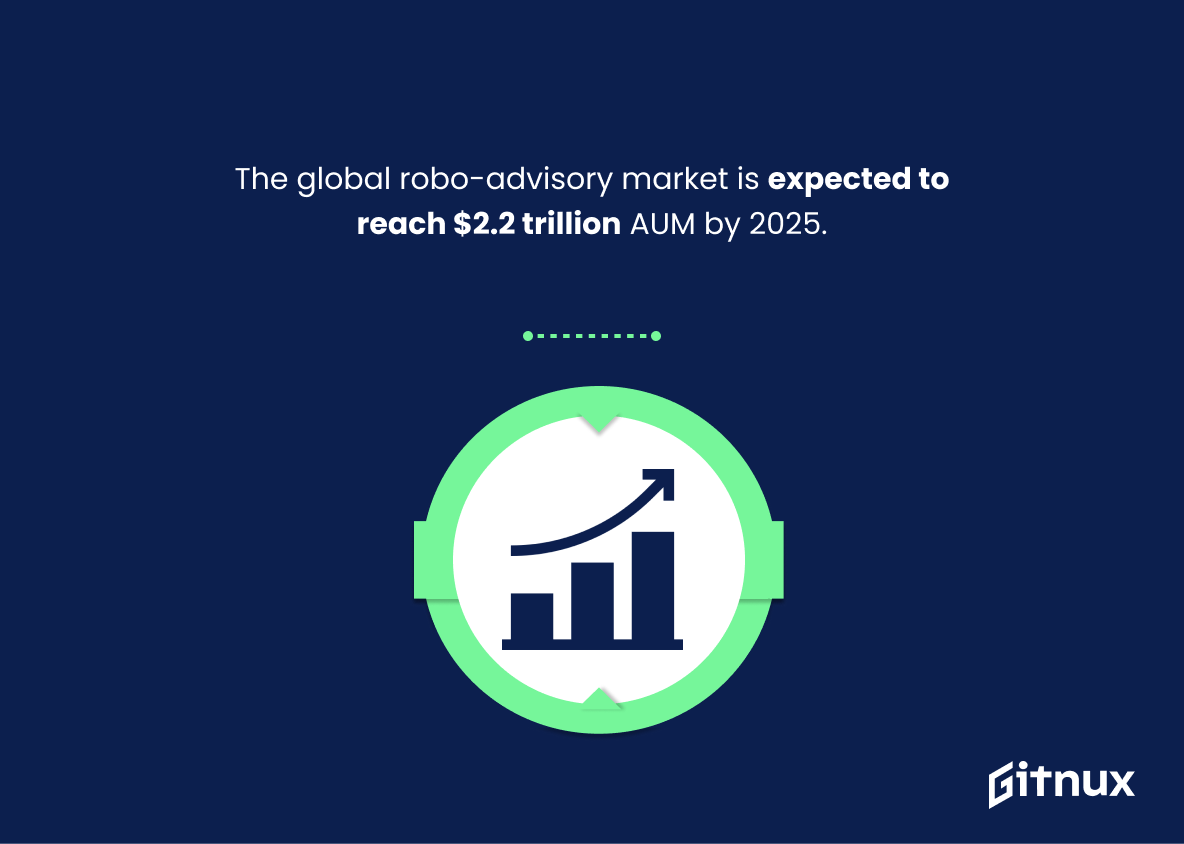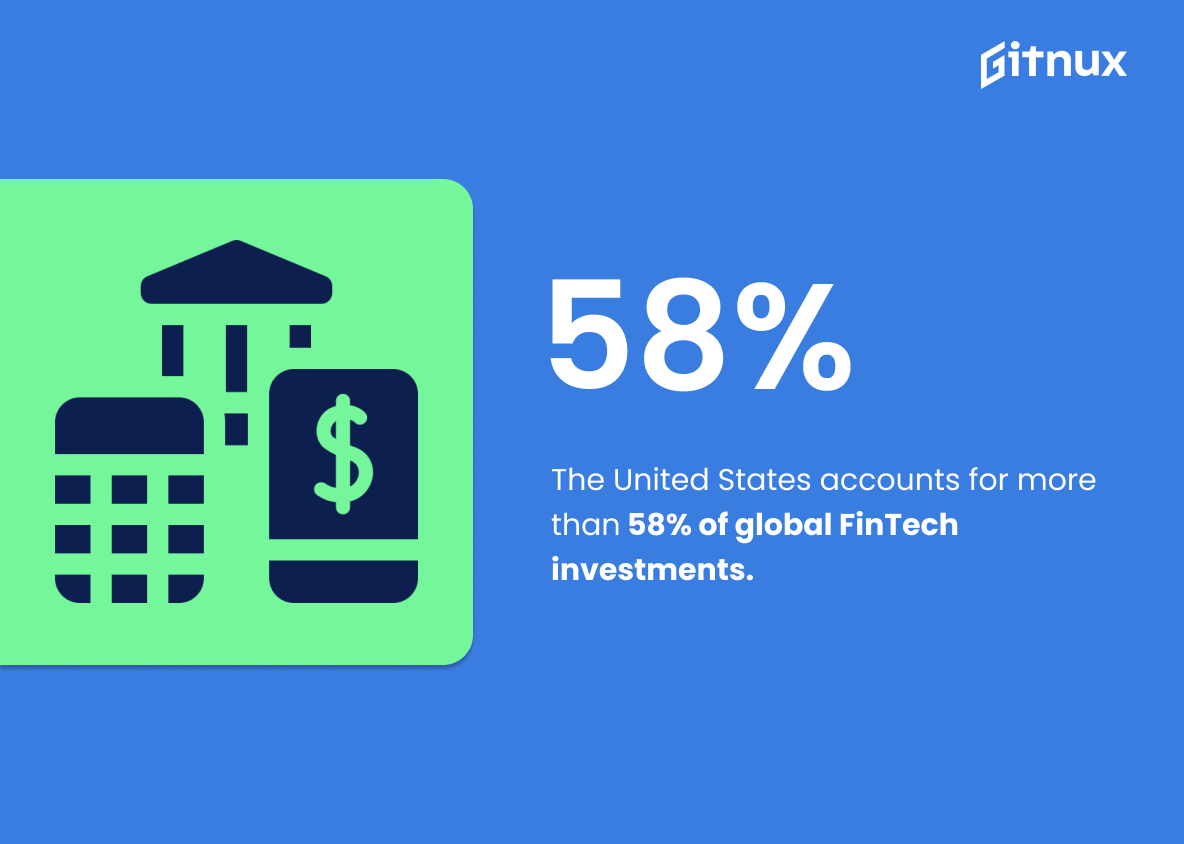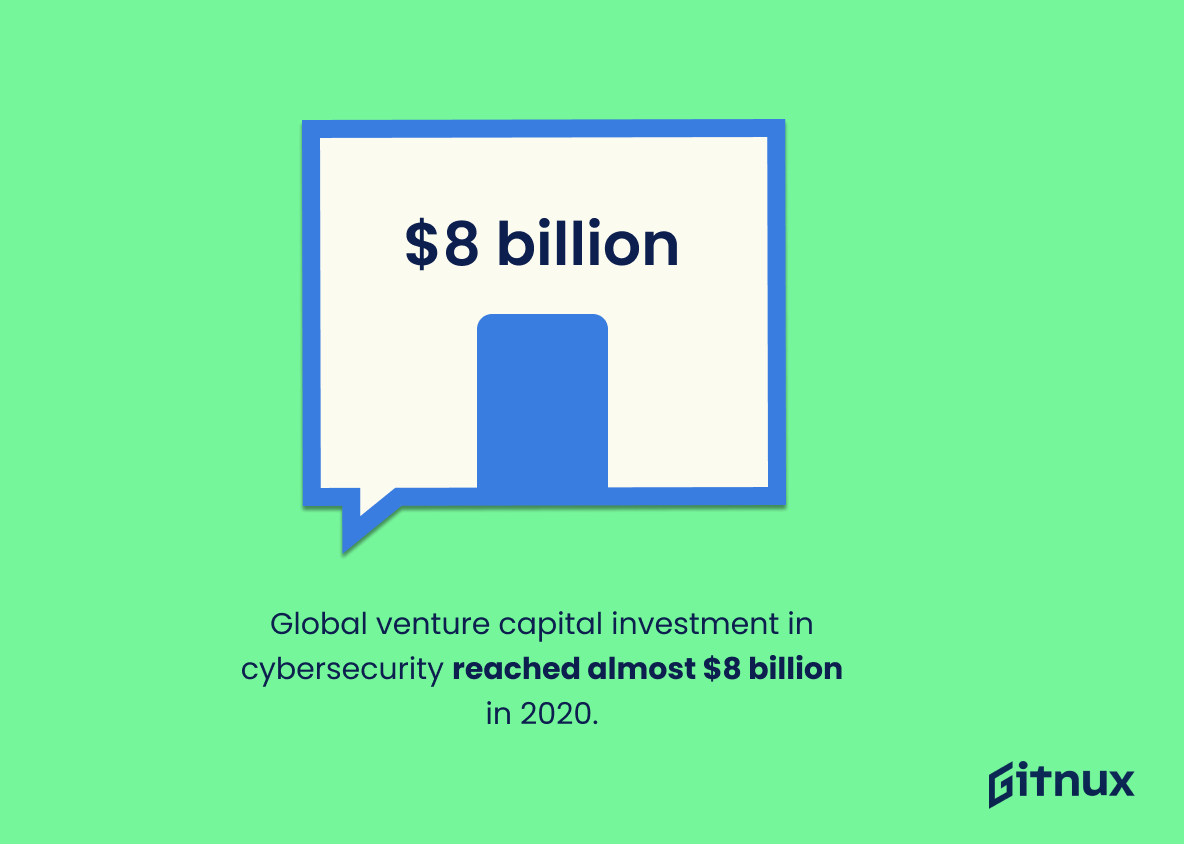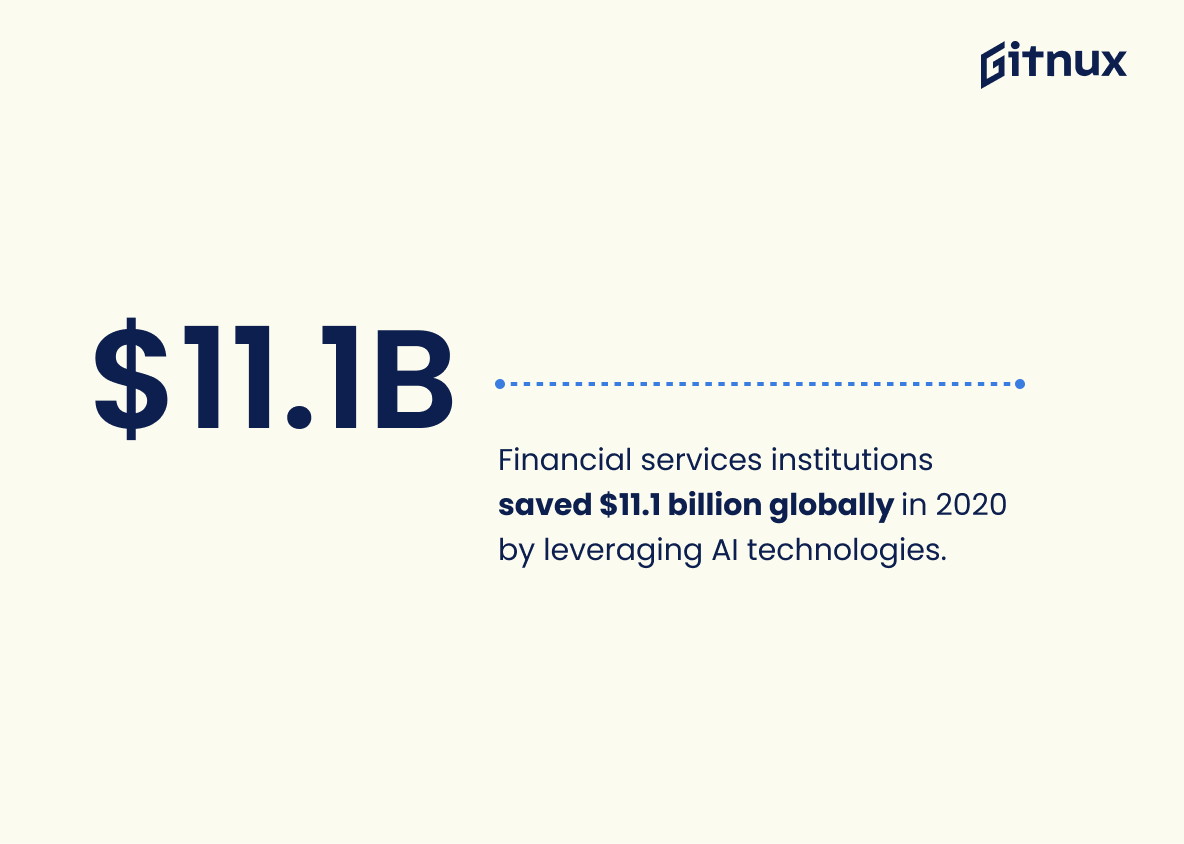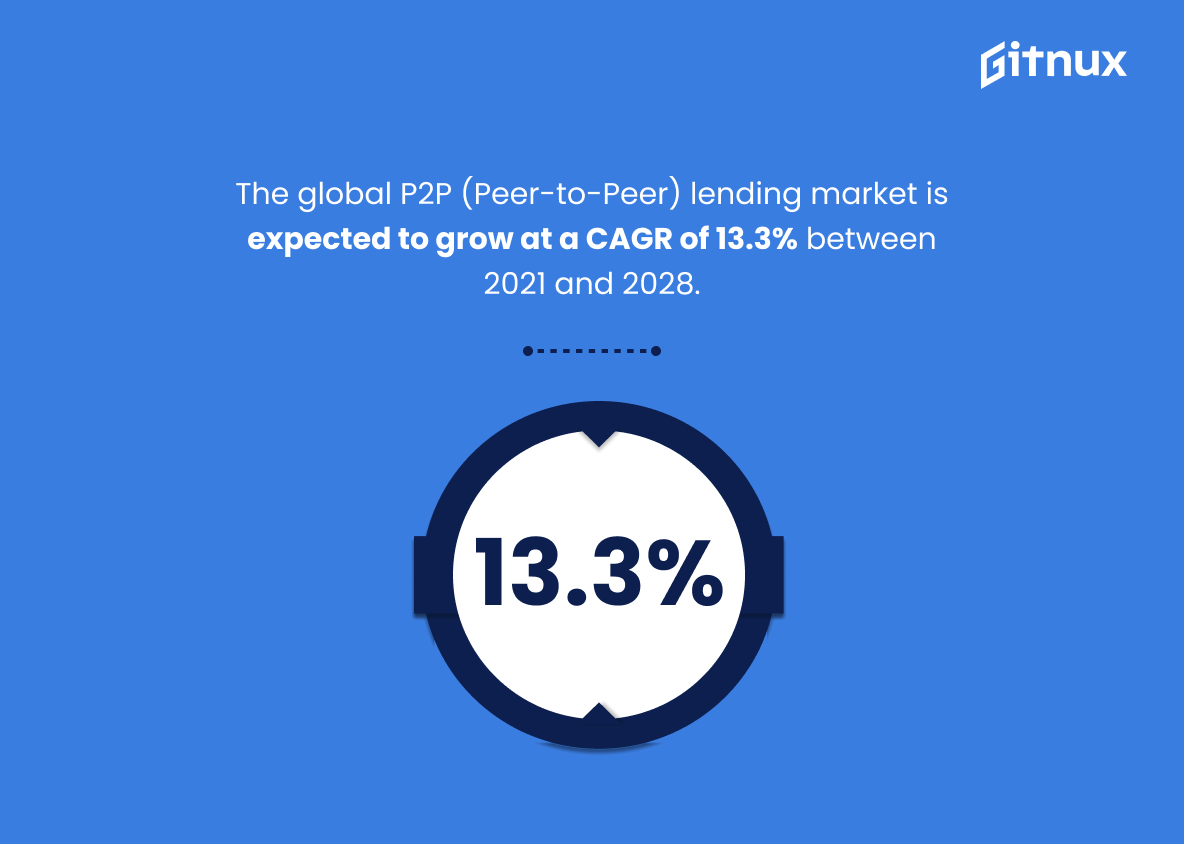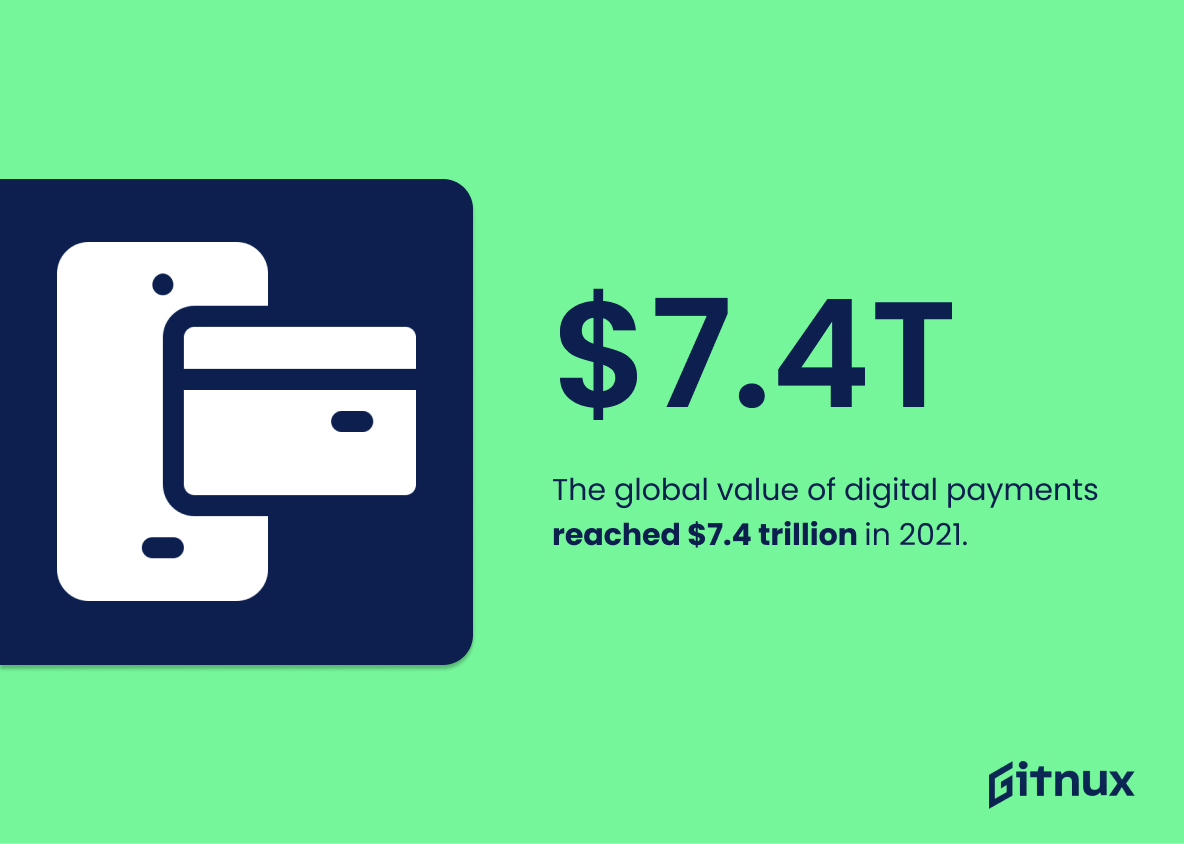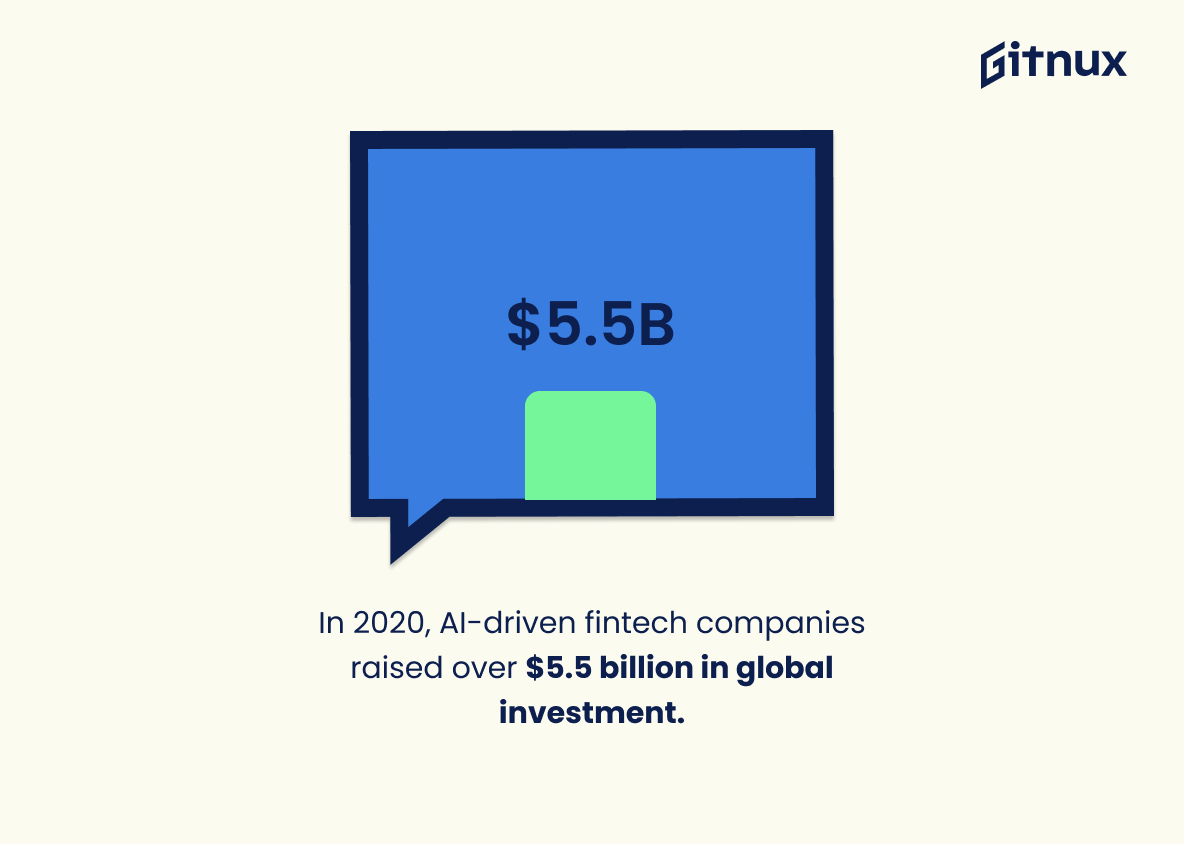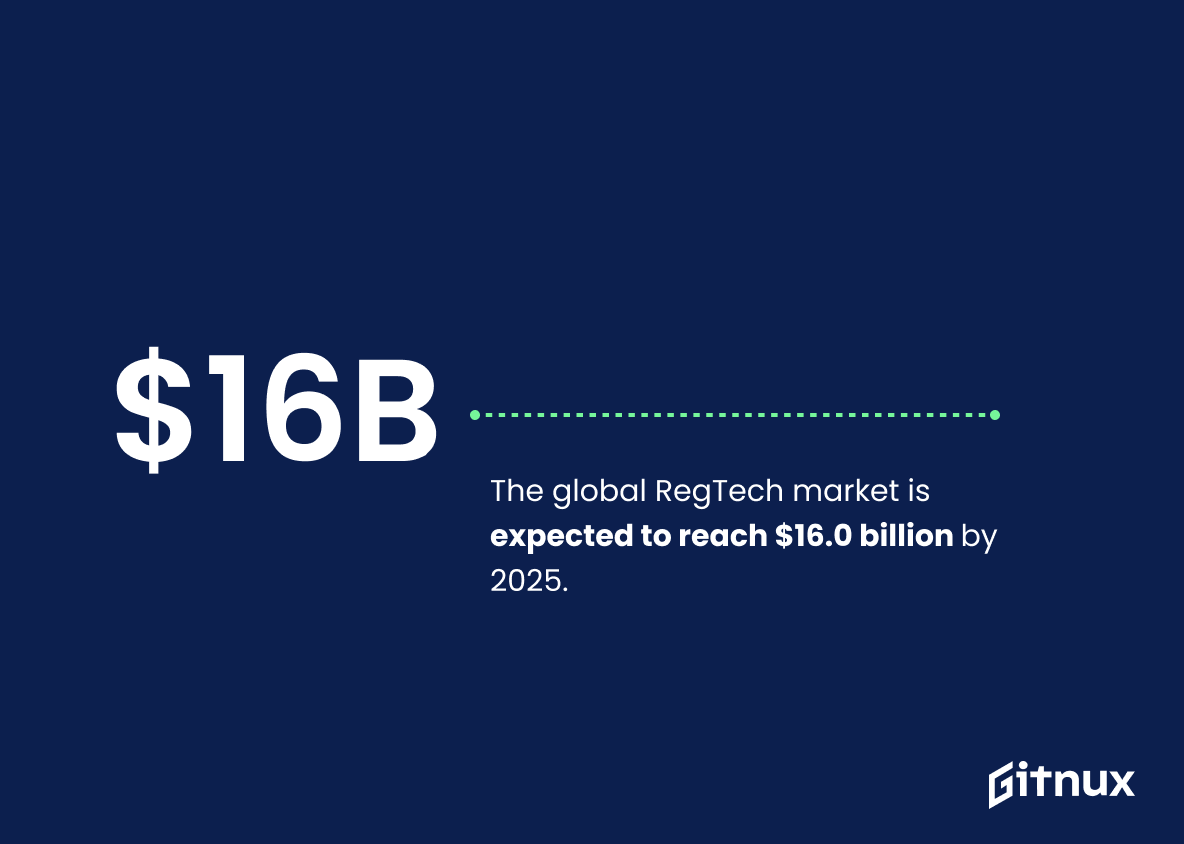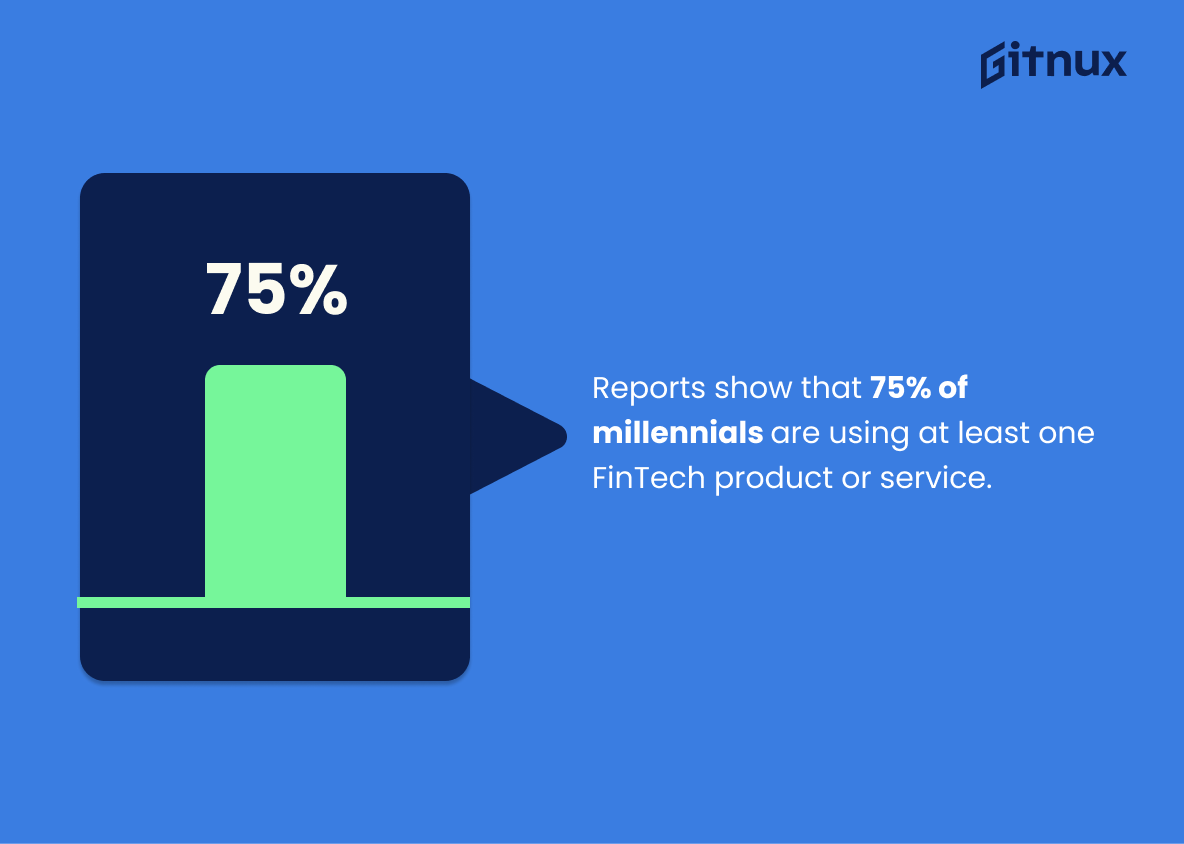The FinTech industry is rapidly growing and evolving, with new technologies being developed every day. This blog post will explore the latest statistics on global investments in FinTech, market growth projections, user adoption rates, venture capital investment trends and more. We’ll look at data from 2020 to 2021 that shows how far this sector has come in such a short time period. Additionally, we’ll discuss the impact of AI-driven fintech companies as well as insights into consumer behavior when it comes to using alternative financial services. Finally, we’ll examine some of the key players driving innovation within this space and their respective contributions to its success thus far.
Fintech Statistics Overview
China is the global leader in FinTech adoption with a rate of 87% in 2020.
This statistic is a testament to the fact that China is at the forefront of FinTech adoption. It highlights the country’s commitment to embracing the latest technology and leveraging it to improve the financial services industry. This is an important milestone for the global FinTech industry, as it demonstrates the potential of FinTech to revolutionize the way we manage our finances.
Mobile banking usage is predicted to surpass 4 billion users globally by 2026.
This statistic is a testament to the growing importance of mobile banking in the world of fintech. With 4 billion users predicted to be using mobile banking by 2026, it is clear that this technology is becoming increasingly popular and accessible. This is a trend that is likely to continue, as more and more people turn to mobile banking for their financial needs.
Approximately 96% of global consumers are aware of at least one alternative FinTech service.
This statistic is a testament to the growing influence of FinTech services in the global market. It shows that FinTech services have become a part of everyday life for many consumers, and that they are increasingly being used as an alternative to traditional banking services. This is an important indicator of the potential for FinTech to revolutionize the financial services industry.
The global InsurTech market is expected to reach $10.14 billion by 2025.
This statistic is a testament to the growing importance of InsurTech in the world of Fintech. With the global InsurTech market projected to reach $10.14 billion by 2025, it is clear that this sector is set to become a major player in the financial technology industry. This statistic is a reminder of the potential of InsurTech and the opportunities it presents for businesses and consumers alike.
The global robo-advisory market is expected to reach $2.2 trillion AUM by 2025.
This statistic is a testament to the growing importance of robo-advisory services in the financial technology sector. By 2025, the global robo-advisory market is projected to manage an astounding $2.2 trillion in assets under management, indicating that automated investment advice is becoming increasingly popular among investors. This statistic is a clear indication that the Fintech industry is continuing to expand and evolve, and that robo-advisory services are becoming an increasingly important part of the financial landscape.
The United States accounts for more than 58% of global FinTech investments.
This statistic is a testament to the United States’ leadership in the FinTech industry. It highlights the country’s commitment to investing in the latest financial technologies, which is essential for staying ahead of the competition and driving innovation. This statistic is a clear indication that the US is at the forefront of the FinTech revolution, and it serves as a reminder of the importance of investing in the sector.
Global venture capital investment in cybersecurity reached almost $8 billion in 2020.
This statistic is a testament to the growing importance of cybersecurity in the world of Fintech. With the increasing prevalence of digital transactions, it is essential that businesses and individuals alike are protected from malicious actors. The $8 billion investment in cybersecurity is a clear indication that the industry is taking the necessary steps to ensure the safety of its users.
Financial services institutions saved $11.1 billion globally in 2020 by leveraging AI technologies.
This statistic is a testament to the power of AI technologies in the financial services industry. It demonstrates the potential for AI to revolutionize the way financial services institutions operate, allowing them to save billions of dollars in the process. This is an important statistic to consider when discussing the impact of Fintech on the financial services industry, as it highlights the potential for AI to drastically reduce costs and increase efficiency.
In 2020, the number of consumers using biometric payment authentication increased by 18% globally.
This statistic is a testament to the growing popularity of biometric payment authentication, highlighting the fact that more and more consumers are turning to this secure and convenient payment method. It is a clear indication that Fintech is becoming increasingly important in the world of payments, and that consumers are recognizing the benefits of using biometric authentication for their transactions. This statistic is a valuable insight into the current state of Fintech and its impact on the payments industry.
The global P2P (Peer-to-Peer) lending market is expected to grow at a CAGR of 13.3% between 2021 and 2028.
This statistic is a testament to the potential of the P2P lending market, indicating that it is a rapidly growing sector of the fintech industry. With a projected CAGR of 13.3%, this statistic is a clear indication that P2P lending is a viable and profitable option for investors and borrowers alike. This statistic is an important piece of information for anyone interested in the fintech industry, as it provides insight into the potential of the P2P lending market.
The global value of digital payments reached $7.4 trillion in 2021.
This statistic is a testament to the immense growth of the Fintech industry, highlighting the increasing prevalence of digital payments in the global economy. It is a clear indication that Fintech is becoming an increasingly important part of the financial landscape, and that its impact is being felt across the world. This statistic is a powerful reminder of the potential of Fintech to revolutionize the way we manage our finances.
In 2020, AI-driven fintech companies raised over $5.5 billion in global investment.
This statistic is a testament to the immense potential of AI-driven fintech companies. It shows that investors are recognizing the value of these companies and are willing to invest heavily in them. This is a clear indication that the fintech industry is growing rapidly and is set to become an even bigger player in the global economy.
The global RegTech market is expected to reach $16.0 billion by 2025.
This statistic is a testament to the growing importance of RegTech in the Fintech industry. With the global RegTech market projected to reach $16.0 billion by 2025, it is clear that this sector is becoming increasingly vital to the success of Fintech companies. This statistic serves as a reminder of the need for Fintech companies to stay ahead of the curve and invest in the latest RegTech solutions.
Reports show that 75% of millennials are using at least one FinTech product or service.
This statistic is a testament to the growing popularity of FinTech products and services among millennials. It shows that a large portion of this demographic is taking advantage of the convenience and accessibility that FinTech offers, indicating that FinTech is becoming an increasingly important part of the financial landscape. This statistic is an important piece of evidence for anyone looking to understand the impact of FinTech on the financial industry.
Conclusion
The statistics presented in this blog post demonstrate the rapid growth of FinTech investments, adoption rates, and usage worldwide. Global FinTech investments reached $105.3 billion across 2,861 deals in 2020 and are expected to grow at a CAGR (Compound Annual Growth Rate) of 24.8% from 2021 to 2028. By 2022 it is estimated that there will be over 3.6 billion FinTech users globally with China leading the way with an 87% adoption rate in 2020 alone. In 2021 there were 94 global Fintech unicorns with an estimated market cap of $135 billion while mobile banking usage is predicted to surpass 4 billion users by 2026 as well as blockchain technology investment reaching over $4.5 billion globally last year too. Additionally, 96% of consumers are aware of alternative fintech services while millennials make up 75% using one or more products/services offered by these companies today – showing just how far we have come since its inception not so long ago.
References
0. – https://www.prnewswire.com
1. – https://www.psmarketresearch.com
2. – https://www.businesswire.com
3. – https://www.adweek.com
4. – https://www.biometricupdate.com
5. – https://www.businessinsider.com
6. – https://www.juniperresearch.com
7. – https://www.thefintechtimes.com
8. – https://www.forbes.com
9. – https://www.syncedreview.com
10. – https://www.cbinsights.com
11. – https://www.grandviewresearch.com
12. – https://www.zdnet.com
13. – https://www.finextra.com
14. – https://www.fortunebusinessinsights.com
ZipDo, cited June 2023: Fintech Statistics
